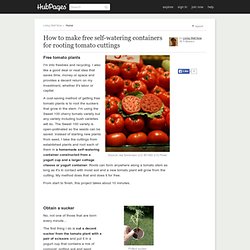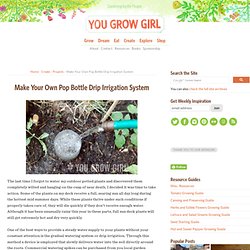

Living lightly from the ground up. Organic home gardening is fun and easy, especially with some good gardening advise. The benefits of organic home gardening are many, for the body, the soul and the earth.

Growing your own food organically will give you better food than money can buy and keep you in shape while you are growing it. It will save you money on food costs and for some will cut out that monthly bill to the gym. By growing food organically (or even buying organic food) you will keep the earth free of poisonous fertilizers, herbicides and pesticides which are destroying our agricultural land and poisoning our earth and water. I speak from experience...
I have had a permaculture homestead farm for the last 30 years and have tried many things and bought garden supplies, tools and seeds from many companies. *Garden Planning *Green Houses * Organic Seeds * Composting * Irrigation. Organic Gardening Information.
Companion Planting. 17 Apart: How To: Plant Seeds Using Eggshells. We were excited when our Sprout Robot alert went off that it was time to start broccoli seeds indoors this weekend for our zip code.

With the move and being in the midst of colder months, we are seriously lacking in the gardening department, except for our avocado sprouts (which we have an exciting update on coming tomorrow). We located our organic broccoli seed packet from last year's garden and hit up our gardening Pinterest boards (mine & hers) where we've been collecting ideas for creative planting all winter. We had one particular idea we'd seen pinned in mind and couldn't wait to try for ourselves — eggshell seed planters.
Evidently, eggshells make the perfect size seed starters, are natural, biodegradable, can be planted directly into the soil after being cracked a little, and supply nourishment to the plant and surrounding soil (not to mention they're free). After saving the shells from this week's eggs, we set out to make our eggshell planters. You'll Need: 2. 3. 4. 5. 6. 7. 8. How to make free self-watering containers for rooting tomato cuttings. Hardening off Six days after being potted and resting in the shade on the porch, the cutting is now officially a tomato plant complete with a bloom.

It's time to harden it off by placing it in direct sun for a few hours a day over the next several days. Expose the plant to three hours of direct sunlight at first and work up to eight hours. When the plant can tolerate a full eight hours in direct sun, it's time to transplant it into the garden. If the cutting is blooming, pinch the blossom off. Ready to transplant After a full day in the sun yesterday with no wilting, my cherry tomato cutting is hardened off and ready for the garden. Make Your Own Pop Bottle Drip Irrigation System.
The last time I forgot to water my outdoor potted plants and discovered them completely wilted and hanging on the cusp of near death, I decided it was time to take action.

Some of the plants on my deck receive a full, searing sun all day long during the hottest mid summer days. While these plants thrive under such conditions if properly taken care of, they will die quickly if they don’t receive enough water. Although it has been unusually rainy this year in these parts, full sun deck plants will still get extremely hot and dry very quickly. One of the best ways to provide a steady water supply to your plants without your constant attention is the gradual watering system or drip irrigation. Through this method a device is employed that slowly delivers water into the soil directly around the roots. The materials you will need are as follows: 2 litre plastic soda bottle or water bottle that still has the lidDrill and small drill bitSharp knifeCutting surface.
Biodynamic Preparation 500 - Cow Horn Manure. Grow 20 Square Feet of Vegetables in 4 Sq Ft of Space with the Phytopod Container Garden. How to Grow 100 Pounds of Potatoes in 4 Square Feet. On many occasions, we've been tempted to grow our own potatoes.

They're fairly low maintenance, can be grown in a pot or in the ground, last a fairly long time if stored properly, and can be very nutritious (high in potassium and vitamin C). Here's more incentive: according to this article, you can grow 100 pounds of potatoes in 4 sq. feet. Learn how after the jump... According to this article from the Seattle Times, potatoes planted inside a box with this method can grow up to 100 pounds of potatoes in just 4 square feet. All that is required: Lumber Seed potatoes Soil Careful attention to watering The Times' guide for building a potato growing box yields up to a 100 lbs. of potatoes in a mere 4 square feet is shown below: Plant as early as April or as late as August 1, with an approximated 3 month till harvest turnaround time.
Here are some pointers from the article: Cut apart larger seed potatoes, making sure there are at least two eyes in each piece you plant. No dig gardens - how to do no dig gardening by gardening the no dig way!